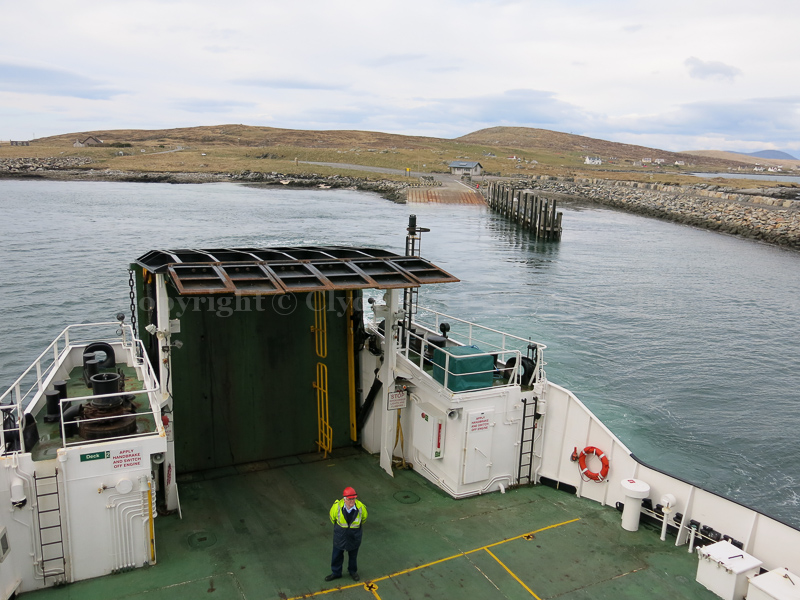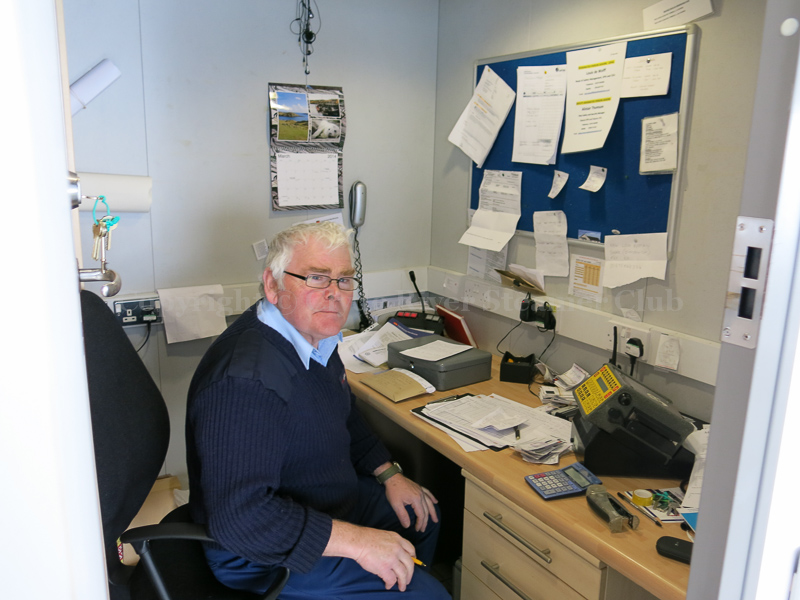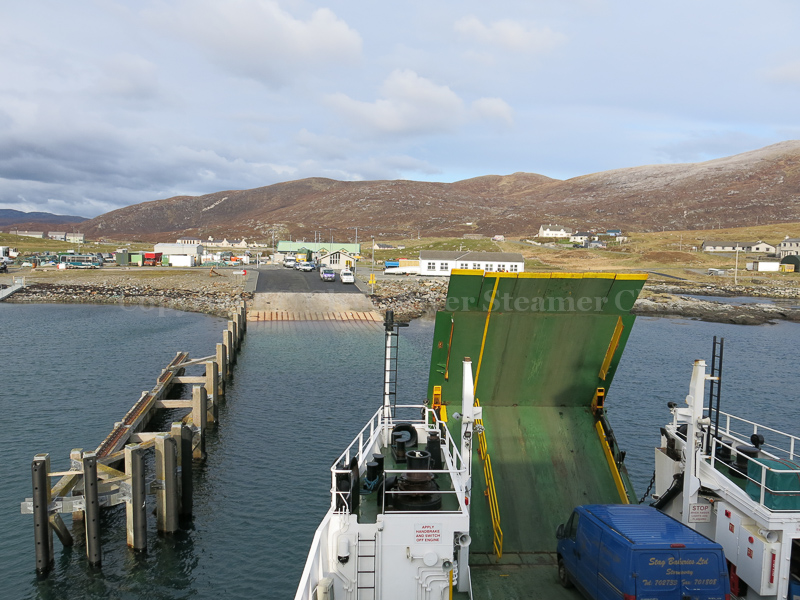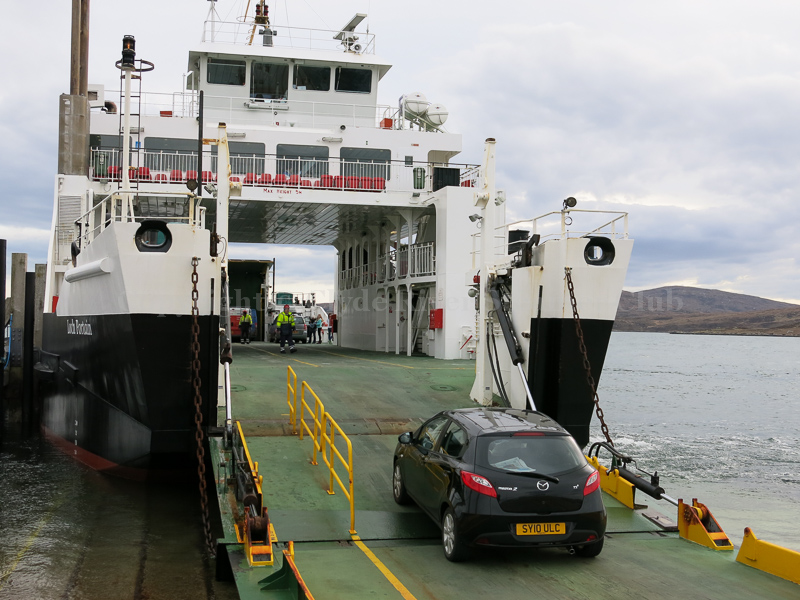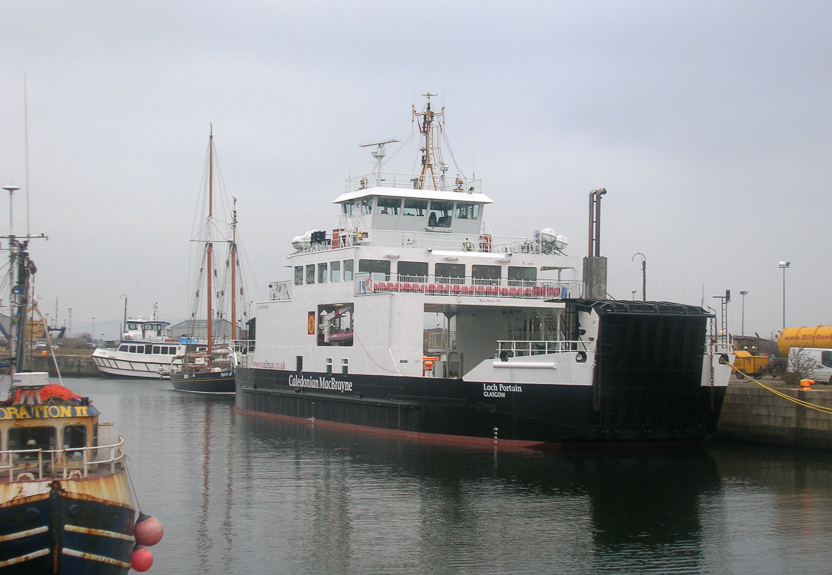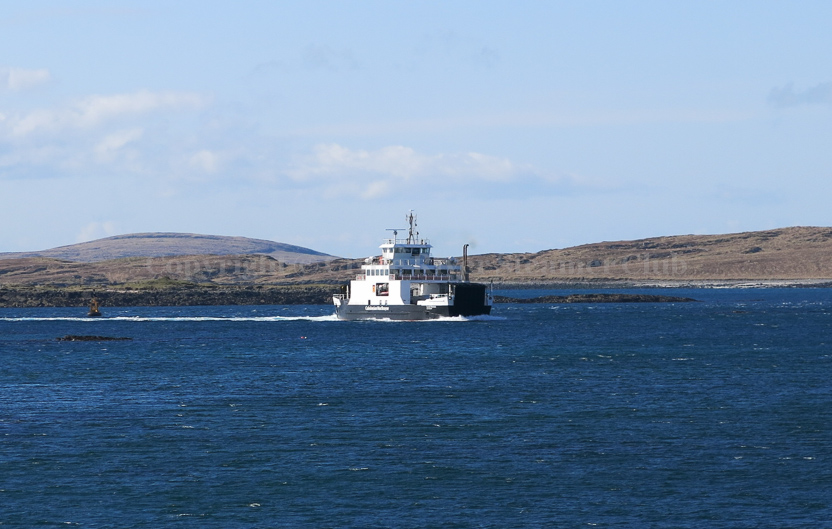Kenny Morrison is the longest-serving skipper on CalMac’s Sound of Harris ferry
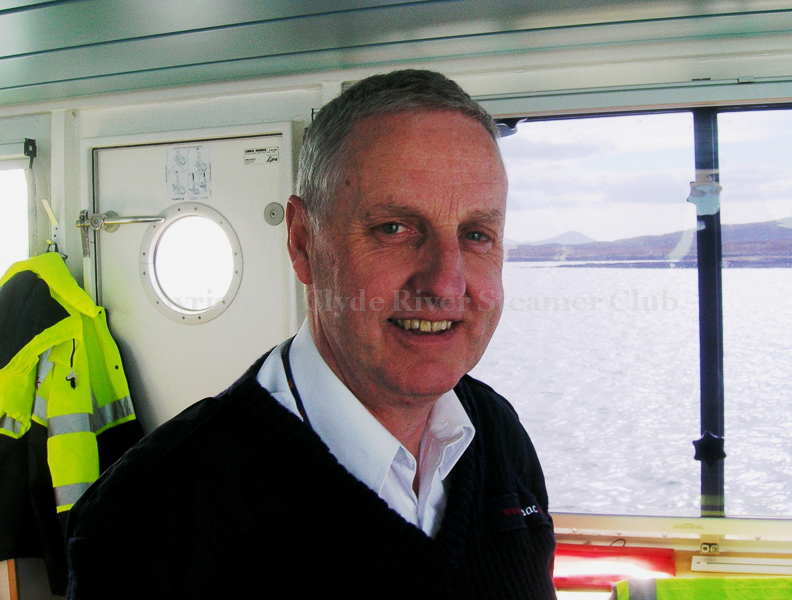
To the untrained eye, a trip across the Sound of Harris is a doddle. You have an hour to enjoy the changing configuration of land, sea and sky as Loch Portain makes her way from Leverburgh at the southern end of Harris to Berneray, a small, windswept island connected by modern causeway to North Uist.
Take a closer look, and this is anything but a straightforward point-to-point sailing. Beneath its open expanse the Sound of Harris is strewn with shoals and rocks, many of the latter visible only at half-tide, necessitating a zig-zag course. The route is also heavily exposed to any wind with an easterly element in it.
 |
 |
 |
|
Loch Portain arrives at Leverburgh
|
Kenny Morrison (right) on the bridge
with bosun Angus MacInnes
|
Start of the zigzag course to Berneray
|
Few have a better understanding of these waters than Kenny Morrison, skipper of Loch Portain since she was new in 2003. “At low water all the rocks appear — it looks totally different from high water,” he says. “We have excellent radar and electronic charts, but the course is well buoyed and you navigate mainly by what you see. I’ve been here a long time. I know it quite well.”
A tall, quiet-spoken 60-year old, Kenny Morrison has known the Sound of Harris ever since he can remember. Born on Berneray at a time when it really was an island, he had to cross the Sound of Harris in order to get to secondary school in Tarbert: he and a handful of other children were taken to Leverburgh by fishing boat or small launch at the beginning of every term. They lived in a school hostel until it was time to go home at the end. Kenny later spent 16 years as a fisherman — “a hard life” — before getting his first job with CalMac in 1994 as a deckhand on Iona on the Mallaig-Armadale run.
When Loch Bhrusda inaugurated CalMac’s Sound of Harris crossing in 1996, Kenny was her first seaman-purser. He took over as skipper in 1999, having sat his Class 5 ticket at South Tyneside College the previous year. Before Loch Portain came on the run, he returned to college to gain his master’s ticket for vessels up to 3,000 gross tons. He still has aunts and cousins on Berneray, though he and his wife Patricia have lived since 2004 in Inverness, with three daughters not far away.
Does he not tire of the same crossing day-in, day-out? “No, I’m very happy with this run, and I like the crew on the boat,” he replies, adding that he finds navigating the Sound of Harris a constant challenge. “It’s not a short crossing. It takes one hour to get to Leverburgh and one hour back, which gives a more settled rhythm to the day [than most other ‘Loch’ class routes].”
By ‘Loch’ class standards Loch Portain is spacious and comfortably appointed. Unlike CalMac’s other small ferries there is a drinks dispenser and a purser’s office. It’s not unusual to hear the Gaelic tongue mingling with tourist twang in the lounge, which offers panoramic views from an elevated level. Given the changing scenery, it’s almost like an old-fashioned steamer cruise.
Kenny describes Loch Portain as “ideal” for the run, largely on account of her manoeuvrability — four Schottel units as opposed to Loch Bhrusda’s two — and ample size, with double the capacity (34 cars) of her predecessor. Loch Portain’s shallow draught (1.55 metres) does not affect her stability in a heavy sea, but allows her to cross in tidal conditions that sometimes forced the deeper-draught Loch Tarbert to cancel sailings when she was relieving Loch Bhrusda.
 |
 |
 |
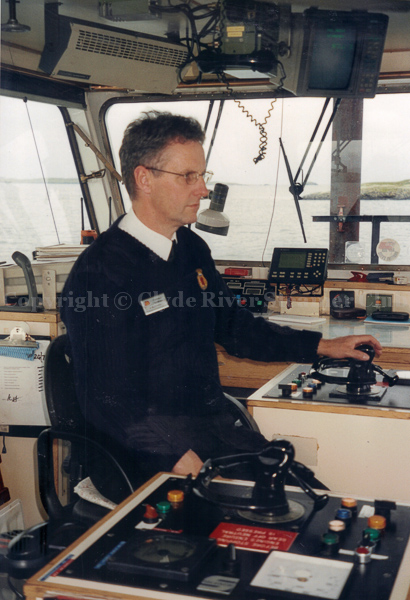 |
|
Iona was Kenny’s
first CalMac ship
|
Loch Bhrusda approaches Berneray
|
Loch Bhrusda (left) at Gourock in 2008
|
Kenny steering Loch Bhrusda
in 2002
|
Loch Bhrusda — like Loch Portain, a shallow-draught vessel — returns every January when the bigger ferry undergoes overhaul. With a crew of five, Loch Portain can carry up to 146 passengers, occasionally increased to 195 for special party bookings, for which an extra crew member is needed.
Due to the unusual demands of the Sound of Harris crossing, the Maritime and Coastguard Agency forbids commercial crossings in darkness. In summer, Loch Portain’s first crossing leaves Bernerary at 7.15am and her last arrives back at 7.30pm. In the depths of winter her first departure is an hour later and she stops at 3.40pm.
 |
 |
 |
|
Loch Portain leaves Otternish
after her lunch break
|
Fish farm vessel Lady Catherine (left)
nears Otternish
|
Loch Portain swivels round
to berth at Berneray
|
“We keep a good eye on the forecasts, because you need to be assured you have enough good weather to get across to Leverburgh and back in time to berth at Otternish [Loch Portain’s overnight berth on the North Uist shore]. If the weather was starting to look bad at 2pm, we wouldn’t go. It’s entirely up to the skipper.”
Loch Portain’s schedule is worked out months in advance to take account of tidal conditions, so that certain ‘irregularities’ are built into the timetable. The two shallowest points of the crossing are roughly a quarter and three-quarters of the way across in either direction. Low tides offer the skipper little room for manoeuvre: the vessel cannot sail if the certified clearance level at any point of the journey is less than 0.9 of a metre above chart datum (chart datum = the level of water on a nautical chart measured at the lowest possible theoretical tide). Kenny says high tides can be equally tricky, “because you cannot see the dangers — it looks like an open stretch of water. In foggy conditions you also have to be that bit more careful.”
It’s time to stop talking. Loch Portain has glided smoothly along the final stretch towards the Berneray breakwater, and is now approaching the turn into the slipway. As purser Kenny MacLean announces our imminent arrival on the vessel’s public address system, bosun Angus MacInnes relinquishes the steering controls to his skipper.
Within minutes the ramp is down and vehicles are driving off — time for Kenny Morrison to steal a few moments’ rest before taking Loch Portain on another voyage across the Sound of Harris.
Kenny Morrison was speaking to CRSC magazine editor Andrew Clark in August 2014.
Sign up for CRSC membership here and further your interest in British coastal shipping.














